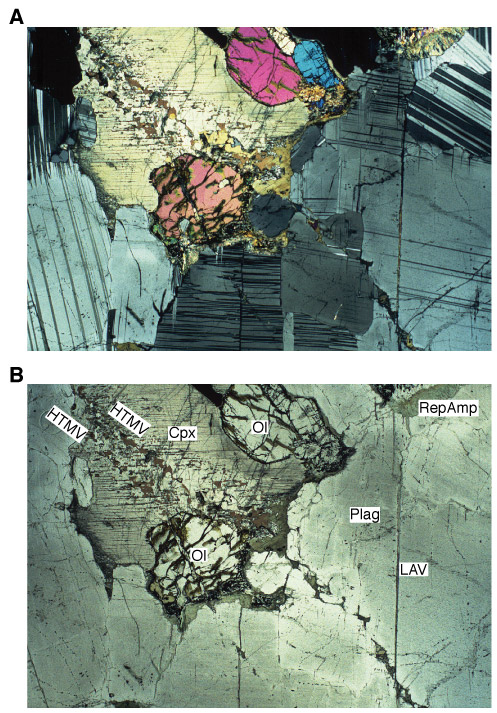Figure F5. Occurrence of the high-temperature microscopic veins (HTMV). A, B. Photomicrograph of a high-temperature microscopic vein cutting olivine, clinopyroxene, and plagioclase in olivine gabbro (Sample 176-735B-130R-3 [Piece 11, 93-95 cm]; (A) cross-polarized and (B) plane-polarized light; field of view = 6.4 mm). In these figures, two high-temperature microscopic veins are shown from upper left to lower right. In the grain of clinopyroxene (Cpx), these high-temperature microscopic veins are marked by the discontinuous alignment of brown amphiboles. The lower vein penetrates an olivine grain (Ol). The upper vein is filled by amphibole within the grains of plagioclase, which is cut by the "later amphibole" vein (LAV), which runs vertically with amphibole (RepAmp) replacing magmatic clinopyroxene. Note the "later amphibole vein" is accompanied by a small offset shown by twinning of magmatic plagioclase (Plag).

![]()